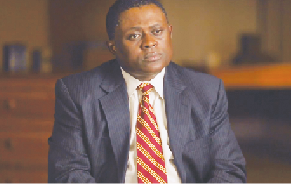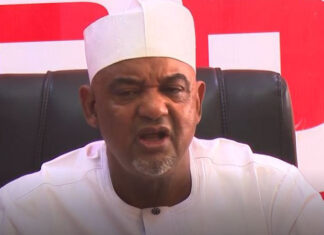Bennet Omalu is a Nigerian forensic pathologist based in United States, whose autopsy of Pittsburgh Steelers Centre, Mike Webster led to Omalu’s discovery of chronic traumatic encephalopathy (CTE). He recently came to limelight in Nigeria when a movie, starring Hollywood Act, Will Smith who played Bennet Omalu with a funny Nigerian accent, was criticised. In this interview with Frontline Television, Omalu talks of the discovery and how his life has changed since…
The begining
… So I was on call that Saturday morning. I woke up, fixed myself a cup of coffee. I was single. I was living in a condo. So I turned on the news to see what was going on, who was killing someone somewhere someplace.
Mike Webster
To see who dies and what my caseload will be. But ironically, all the channels were talking about this very prominent guy. I did not even know his name, Mike Webster.
See, I grew up in Africa, in Nigeria. I never knew, I never had any reasonable encounter with Rugby. I saw it on Sky News. I thought there were people dressed like extraterrestrials, you know, like they were going to Mars or something, headgears and shoulder pads. And I wondered why as a child why did they have to dress that way.
So they were talking about this prominent guy who sold his Super Bowl rings, who did not compete well in the field of life after his retirement from the game, who led somewhat an ignominious life from prominence to obscurity.
Suddenly I wondered — I’m like, “Wait a minute.” If he played Rugby for them to wear helmets and all those protective gear that meant it was a violent game. That meant they were exposed to repeated trauma to justify the need to wear a helmet. And then I said to myself, if he had such a bizarre life after Rugby, could this not be similar to what we see in boxers, dementia pugilistica? …
Hospital death
Well, remember, I work for a medical examiner. By law I would perform autopsies on cases that fell under the jurisdiction. If you have a known cause of death and if you were under the care of a physician, it may not fall under the jurisdiction of the coroner if there is a physician willing to sign the death certificate. …
So I pulled the guy to the corner. I said, “No, who is he?” I didn’t know. He teased me and said: “Oh, are you nuts? What do you mean you don’t know Mike Webster?” So I said: “Wait a minute. Is he the guy they are talking about on TV?” He said, “Yes, yes, he is the guy.”…
There is a practice I have. I am a spiritual person. I’m a Catholic. I treat my patients, the dead patients, as live patients. I believe there is life after death. And I talk to my patients. I talk to them, not loudly but quietly in my heart when I look at them. Before I do an autopsy, I must have a visual contact with the face. I do that. I’ll come out of respect; I’ll look at the face.
The discovery
In fact, when I opened up his skull, in my mind I had a mental picture of what his brain would look like based on my education. I was expecting to see a brain with Alzheimer’s disease features, so a shriveled, ugly-looking brain.
So I picked up the brain to cut it. I was thinking — a lot was going on through my head. … So I stopped. I said: “No, let me fix this brain. Let me spend time with this brain. There is something. Something doesn’t match.” …
I saw abnormal proteins in his brain, so-called neurofibrillary tangles, and threads. But I looked at several, you know, the topographic distribution. It was different from Alzheimer’s disease. Again, that complicated my disposition, my state of mind. So I took the slides home, said, “This is something I need to spend time with.” …
After I looked at it over and over and over, I was convinced this was something, I said: “OK, it’s something, but don’t make the mistake other people make and just publish it and give it a descriptive name. Name it a disease, give it a name, and present it as a disease. Package it. Develop a pathogenetic concept for it.”
The name, CTE
And again, then I was attending business school at Carnegie Mellon University, so I had taken classes in brand management: How do you create brand equity? How do you commoditise information or equitise information, add value to something that has no value? I know in branding, a name is very important, and not just a name, a name people can remember, a name that has a good acronym, OK?
But at the same time, I was thinking of the possibility that I could be wrong. So rather than boxing myself into a corner, give it a descriptive name that has a good acronym, so if you’re proven wrong you could hide under this descriptive terminology. “Hey, that is nothing. ‘Chronic’ means long-term, ‘traumatic’ means it’s associated with trauma, ‘encephalopathy’ means a bad brain.” So I had both ends covered. …
The next step in epidemiology is to have your peers confirm it. When you find a sentinel case, you show it to your peers who confirm it, you publish it, you look for a second case. Then with the third case it becomes a case series. You publish the case series. The next thing now, is a cohort. You look for a cohort; you describe the cohort. These were the phases I learned in epidemiology.
Presenting symptomatology
That he lost all his money, which he was living like a vagabond, was a drug addict. He was suffering severe depression. Sometimes he couldn’t find his way home. He had a progressive deterioration in his socioeconomic status, in his personal life and interpersonal relationships.
At some point he was homeless. These are the constellation of symptoms that were published in 1927, and even before 1927, as far back as the 18th century. …
Something new
His age. His age alone. To have Alzheimer’s disease at such a young age. It’s either you have Down syndrome or you have one of the family of Alzheimer’s; that is extremely rare, you find maybe in the Scandinavian countries, and there will be a family history. Oay? When I heard his age and his symptoms, I dismissed it was not Alzheimer’s disease period. And when I saw his brain then, even without doing any other study, I was convinced this was not Alzheimer’s disease.
Fixing the brain
I fixed the brain, and because I did not understand what was going on, I chose to forget about it. It was causing me such distress, if you could call it that.
Fundamental discovery
Yes. It depends on your perception, though. My perception is, again spiritually, simply the truth, and the truth shall set you free. I’d rather want to be told the truth and I will deal with the truth than be wallowing in ignorance and darkness and lies.
Implications for children
Well, it’s really part of positive thinking. You take the information, the implications, and turn it into something positive. You rather embrace knowledge and use it to create more positive knowledge and make more positive impact. It depends on how you look at it.
The aftermath
I’m not happy. Before Mike Webster, I led my life. Nobody called me. I did my own thing. Nobody thought I had anything to fight over with them. I led a very simple, easy life.
But CTE has dragged me into worldly affairs, unnecessary competition.
Implications of head injuries
Some people have paid prices, their lives. Some people, while adding value to entertain us unfortunately were not aware while they were entertaining us that they were slowly losing their lives.
The child of six, seven years old signs up. He is told it is a sport; there are benefits; you’re a Rugby player. You’re a college Rugby player, there are some benefits. As a professional player you’re going to make money. But nobody tells them that you’re also losing your life as you do that.
And then when players lost their lives after retirement and started manifesting the symptoms of CTE, they were dismissed as losers, as irresponsible, as people who were not intellectually capable to compete outside the protection Rugby afforded them.












